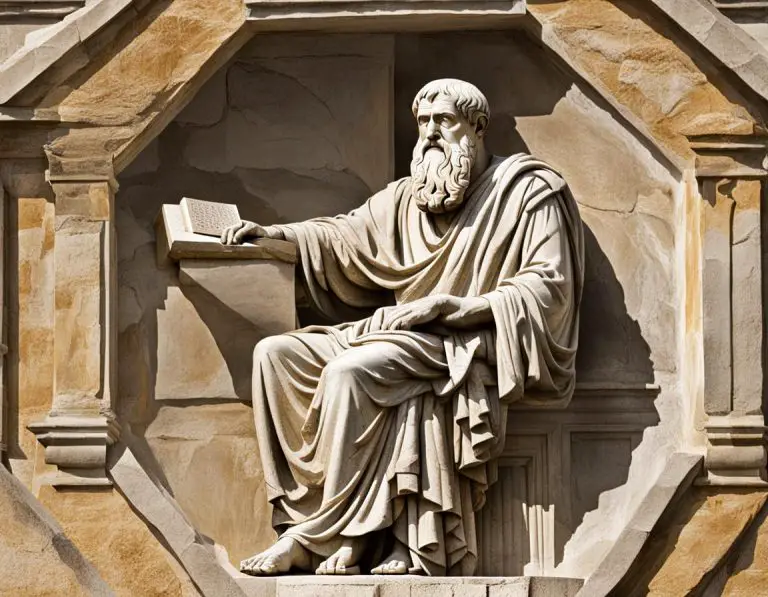Impact of Pythagoreanism on Plato
Pythagoreanism, an influential philosophical and religious movement in ancient Greece, played a significant role in shaping Plato’s philosophical ideas. The Pythagoreans believed in the importance of mathematics and its connection to the underlying order of the universe. This emphasis on rationality and the belief in a harmonious cosmos deeply influenced Plato’s own views on the nature of reality and knowledge.
Plato integrated elements of Pythagorean thought into his own philosophical framework, particularly in the realm of metaphysics. The Pythagorean focus on the immutability of mathematical truths and the notion of abstract forms resonated with Plato’s theory of Forms. Like the Pythagoreans, Plato believed in the existence of a higher reality beyond the physical world, where timeless and unchanging Forms served as the foundation of all existence.
Numerology and Mathematics
Plato’s philosophical ideas were deeply intertwined with numerology and mathematics, reflecting his belief in the intrinsic harmony and order of the universe. Numbers held a sacred significance for Plato, serving as a pathway to understanding the underlying structure of reality. In his dialogue “Timaeus,” Plato explores the concept of the World Soul through mathematical proportions, emphasizing the cosmic importance of numerical relationships.
Furthermore, Plato’s fascination with mathematics extended to his theory of forms, where he envisioned perfect geometric shapes as the ideal prototypes that govern the physical world. This mathematical approach allowed Plato to transcend the material realm and explore the realm of abstract ideas, highlighting the interconnectedness between mathematical principles and philosophical concepts. Through his exploration of numerology and mathematics, Plato sought to unveil the universal truths that underlie existence and guide human understanding of the world.
Metaphysical Ideas in Platonic Dialogues
Plato’s discourses are replete with metaphysical undertones that seek to explore the fundamental nature of reality and existence. In his renowned work “The Republic,” Plato introduces the Allegory of the Cave, a powerful metaphorical narrative that delves into the nature of perception and reality. By portraying individuals bound in a dark cave, only able to see shadowy reflections of true forms, Plato challenges readers to contemplate the limitations of human perception and the quest for true knowledge.
Furthermore, Plato’s Theory of Forms presents another key metaphysical concept in his dialogues. According to Plato, the physical world is merely a shadowy reflection of the true realm of Forms, which represent the pure essence of concepts such as beauty, justice, and truth. Through dialogues like “Phaedo” and “Parmenides,” Plato delves into the nature of these Forms, positing that they exist beyond the tangible world and serve as the ultimate reality that human beings should strive to understand.
Allegory of the Cave
The Allegory of the Cave, one of the most famous metaphors in Plato’s philosophy, is found in Book VII of “The Republic.” This allegory presents the idea of humans being imprisoned in a cave, only able to see shadows on the wall cast by a fire. The prisoners mistake these shadows for reality, illustrating Plato’s belief in the existence of a higher truth beyond our sensory perception.
In the allegory, the philosopher is someone who escapes the cave and sees the sun, representing the journey from ignorance to enlightenment. This powerful imagery symbolizes the philosopher’s role in society, conveying the importance of seeking knowledge and questioning the reality presented to us. The Allegory of the Cave serves as a poignant reminder of the transformative power of philosophy and the pursuit of wisdom in overcoming the limitations of our perceptions.
Influence of Heraclitus on Plato
Heraclitus, a pre-Socratic philosopher known for his doctrine of constant change and flux, deeply influenced Plato’s philosophical thought. While Heraclitus focused on the impermanence of all things in nature, Plato expanded on these ideas by delving into the realm of metaphysics and the nature of reality itself. In his works, Plato explored the concept of Forms or Ideas, which he believed to be the true essence behind the physical world we perceive.
One of the key differences between Heraclitus and Plato was their views on the nature of reality. While Heraclitus emphasized the ever-changing nature of the world, Plato posited the existence of a higher, unchanging realm of Forms. This shift from a focus on flux to a belief in eternal truths reflected Plato’s inclination towards a more stable and absolute view of reality. Heraclitus’s influence on Plato can be seen in the latter’s Dialogues, where he grapples with questions of knowledge, existence, and the underlying structure of the universe.
Flux and Change
Heraclitus, a pre-Socratic philosopher, exerted a significant influence on Plato’s philosophical thoughts, specifically in terms of the concept of flux and change. Heraclitus famously stated that “everything flows” and that change is the fundamental essence of the universe. Plato, in his dialogues, grappled with these ideas and incorporated them into his own philosophical framework. The notion of constant change and impermanence became a recurring theme in Plato’s works, shaping his views on the nature of reality and existence.
In Plato’s Allegory of the Cave, the idea of flux and change is vividly portrayed through the image of prisoners chained inside a cave, perceiving only shadows as reality. As one of the prisoners breaks free and ascends to see the outside world, a transformation occurs as he becomes aware of the true nature of existence. This allegory symbolizes the journey from ignorance to enlightenment, highlighting the profound impact of recognizing the ever-changing nature of reality. Plato masterfully weaves Heraclitean concepts of flux and change into his philosophical allegory, inviting readers to contemplate the dynamic and shifting nature of the world around them.
Related Links
What are the Key Points of The Tripartite Soul
Why is The Allegory of the Cave Significant in Plato’s Philosophy
